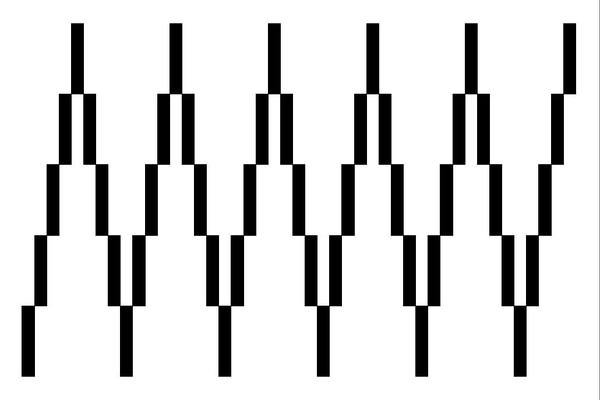Incidental Arrangements
dal 19/12/2008 al 30/1/2009
Segnalato da
19/12/2008
Incidental Arrangements
Galleria Gentili, Prato
Opere di Wolfgang Berkowski and Ignacio Uriarte. La mostra si sviluppa attravarso il paradosso di un ossimoro che interroga come un elemento accidentale, qualcosa di casuale e fortuito che capita per caso, possa essere sistemato in una struttura specifica e ordinata, e quindi generare un'articolazione tra diversi elementi. A cura di Filipa Ramos.

Curated by Filipa Ramos
Incidental Arrangements is developed around the paradox of an oxymoron. It questions how an ‘incidental’ element, something random and fortuitous that happens by chance (through the combination of unpaired elements) can be ‘arranged’ in a specific and ordered way, and therefore generating an articulation between the different elements. An Incidental Arrangement can also be a composition made out minor or inessential pieces that therefore become important and privileged.
Incidental Arrangements is also the title a book made by Wolfgang Berkowski for Onestar Press in March, 2001, and it is from here that the present exhibition took its title1.
This process of putting together apparently different and unrelated elements is the starting point for an exhibition that generates a dialogue between two artists, Wolfgang Berkowski and Ignacio Uriarte, that articulate a methodology of seriality and repetition in their practice, exploring the possibilities of developing articulations, translations and dialogues between forms and objects.
Berkowsky and Uriarte use a different approach in combining and establishing these links. If both artists combine personal experiences and memories with an apparently cold and minimalistic result, their practice is quite opposite: Uriarte proposes a non existent reality out of his creations while Berkowski sublimates the real into his diagrammatic compositions.
Wolfgang Berkowski’s work appropriates the language of minimal and conceptual art, using it as a given, established grammar for his output.
The series of diagrams displayed in Construction (1993) compose a synthesis of the artist’s relation to certain architectonic evocations. Berkowski turns these architectures into schematic drawings that allow him to detach from his own feelings towards this original matter and therefore preserving what he retains essential. Formally, they are displayed in a sort of mini architecture that could suddenly crumble apart like when a domino labyrinth falls down or when a castle of cards comes down.
On the other hand, Ignacio Uriarte’s four 4x4 Labyrinths (2008) could never loose their ordered and dense appearance, as they are a totally artificial construction, made out of an inexistent element, as they are created out of a computer program. They create a moire pattern that goes against its diagrammed structure, generating a conflict between rationality and decoration in these four variations on a theme.
Uriarte’s practice is in deep relation with his background as an administrative employee: he often borrows the methodologies of bureaucracy into his creations, through the serial and almost obsessive repetition of actions and procedures. Mainly working with drawing (either hand made or generated by computer programs, such as word of excel) and with found objects (also mainly related to the corporate universe: watches, archive files, paper clips, notebooks…), the artist enhances the creative processes that hide behind the mechanical procedures that give shape to the working routine.
His slide projection 80 blots (2008) use the opposite methodology of the Labyrinths, since it develops the interplay between control and unpredictability. Through the methodical act of dropping a blot of blue ink into a sheet of paper, the artist creates a series of 80 variable and uncontrolled stains. He turns what is generally seen as an accident (the drop of ink into a document) into the main formal element of the work.
Berkowski’s Models for 'Inflatable Cages' (2005) are, as their title indicates, prototypes of empty structures that define space in a relation between out and inside. They propose certain behaviours and positionings in the space (some of them even stage specific spatial/psychological relations between subjects). However, we never see the concretization of these suggestions and they remain what they are: an allusion to invisible interactions.
Uriarte’s Drawings without Ink (2008) also display a promise of an unseen act: they are made with a pen that has run out of ink and what we see is the gestural mark left by the artist in the whole page. It is the opposite of Rauschenberg’s Erased De Kooning (1953): instead of erasing, the artist drew with no pigment.
Berkowski’s work Merry Christmas / War is Over (2008), that took its title from John Lennon’s homonymous song, will also generate this feeling of erasure or withdrawal: this installation piece will only last during the opening night and will turn itself into an evocation of a dismantled exhibition during the rest of the show. It displays works (or representations of works) by Robert Barry, Keith Edmier, Iain Forsyth/Jane Pollard, Hans Peter Feldmann, Victoria Fu, John Lennon/Yoko Ono, Ken Lum, Federico Pietrella and Pietro Sanguineti. Once again, Berkowski is summoning a synthetic memory through the incidental arrangement of forms and objects, creating a ghost piece that will disappear shortly after its appearance.
1. In the books Berkowski developed serial combinations of images, diagrams and words that generated a map of some of the key issues of his work, creating a ‘gestalt’ out of seemingly discreet entities. The first book is divided in three sections, «Connectors», «Milieu» and «Cover» in which the artist captures the essence of certain elements that are related in different degrees to visual manifestations: the reduction of certain architectonic elements to its minimal composition lines («Connectors»); the evocation of the corpus of works produced by the artist through its titles and without any visual reference («Milieu») and the serial repetition of a composition with subtle variations («Cover»). On the second volume called ‘Arranged Incidents’, which the one that contains the «Milieu» section, the artist articulated the work titles of reproductions of the works in itself.
Opening december 20th, 2008
Galleria Gentili
via del Carmine, 11 - Prato
Free admission



